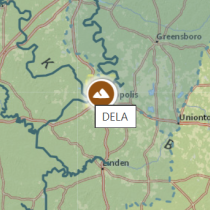Data Notification
Update to foliar chlorophyll data quality issue related to sample storage temperature
November 4, 2024
As detailed in a previous notification, a partner laboratory conducting pigment analyses for NEON stored foliar subsamples at -20°C instead of the required -80°C for 1 to 7 days prior to extraction and analysis. This impacted all foliar chlorophyll records collected in 2022 and most from 2023. The data were flagged in the cfc_chlorophyll table of DP1.10026.001 (Plant Foliar Traits), but NEON wished to conduct a study to compare the effect of -20°C vs -80°C storage and assess the importance for chlorophyll and carotenoid content.
More details and results from this study can be found here: https://data.neonscience.org/api/v0/documents/FoliarChl_StorageTemp_2024_Results. To summarize, there was no significant storage temperature effect on pigment content when comparing -20°C to -80°C holding across a range of 1-6 days. This result was consistent for broadleaf, conifer, and herbaceous tissues. This suggests that the improperly stored samples are still likely suitable for most analyses because the temperature deviation had minimal impact. And yet, this was a small sample size (n = 23) and overly strong conclusions should not be drawn. For example, NEON will not be changing required holding temperatures and partner labs will continue to be required to store samples at -80°C according to community best practice. Note that as of the 2024 field season, NEON is working with a different external laboratory for foliar pigment analyses.
Please use the Contact Us form for further inquiries; please select DP1.10026.001 in the Data Product dropdown list and include the term "Foliar Chlorophyll" in the body of your request.
